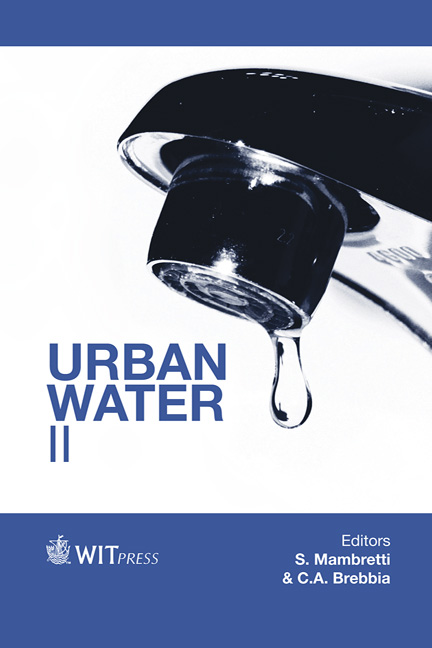Tests On A Polyvinyl Chloride Pipe From An Existing Water Distribution System
Price
Free (open access)
Transaction
Volume
139
Pages
12
Published
2014
Size
637 kb
Paper DOI
10.2495/UW140011
Copyright
WIT Press
Author(s)
B. Kowalska, A. Rudawska & D. Kowalski
Abstract
The following paper presents mechanical strength test results of a 160 x 9 mm PVC-U pipe, in the service of Municipal Water and Sewage Company since 1976, and the impact of the pipe material on the quality of water in contact. The water quality was evaluated in terms of the leaching of certain chemical elements from the pipe material to the water. Additional tests were carried out on the water obtained from different sections of the PVC-U plastics piping systems for the water supply. Chemical elements detection was performed with inductively coupled plasma optical emission spectrometry ICP-OES JY 238 Ultrace. Furthermore, the testing included the analysis of sediment found on the inside pipe wall, with the application of a Quanta 200 FEG Scanning Electron Microscope (SEM). Migration tests showed a clear influence of the pipe material on water quality which was in contact with the PVC pipe. The highest recorded value of lead in water samples was 162.2 ppb and significantly exceeded the allowable concentration of lead contained in Directive 98/83/EC of the European Union equal to 10 ppb. Leaching of this element from the pipe material into the water proves the use of lead compounds as stabilizers for the production of pipes. The study of the chemical structure by Infrared Spectrometry showed changes in the test samples, demonstrating the degradation of the material, however, without affecting its strength. But the degradation of the material may affect the migration of lead into the water. The analysis of sediment on the inside of the pipe wall allowed us to identify mainly calcium carbonates, oxides and hydroxides of iron and manganese and also sodium chloride. The elements
Keywords





